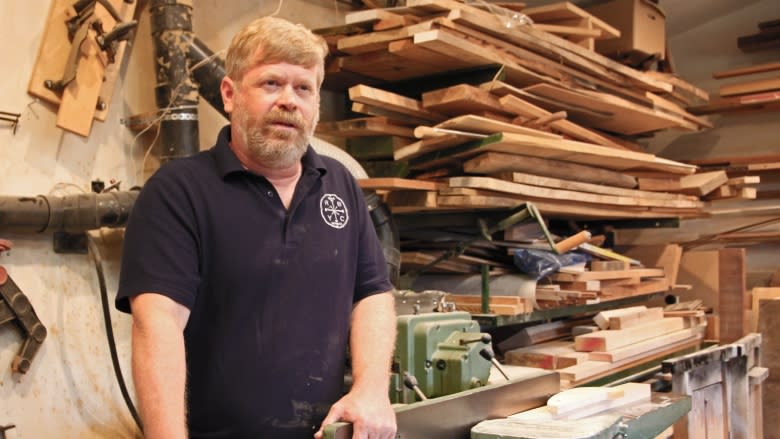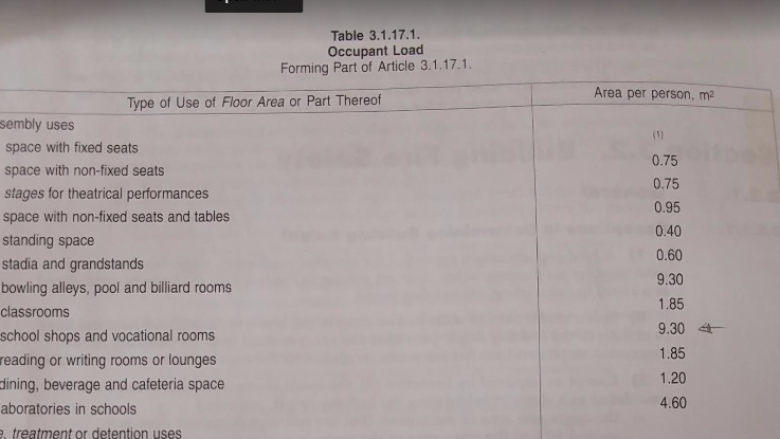Overcrowded shop classes endanger students, Saint John High School teacher
High school teachers have a challenging job at the best of times.
A packed classroom of teens in a room full of saws, drills, and other potentially dangerous machinery is an accident waiting to happen, according to veteran Saint John High School machine shop and carpentry teacher Ross Phinney.
Phinney said he's been pushing for more than a year and a half to have the size of his machine shop and carpentry classes capped at 15 students.
- Welding returns to New Brunswick schools after 2 decades
The Department of Education says the shop should be able to handle 22.
"There are people standing everywhere, machines everywhere, literally lined up side by side," Phinney said. "If you want to walk down a corridor between machines and tables, you have to move physically around people. There's no straight line from one end to the other. People are bumping into each other. The students find they're way too cramped."
During his 16 years teaching at Saint John High, Phinney said, "we've gone from class sizes 10, maybe 13 or 14, to, in the last three years, 16 to 22."
"They're teenagers," he said, "They don't always think. I've stopped many accidents from happening over the years.
"But you can't do that with that many kids in the classroom."
'Safety is paramount'
The Department of Education said it collaborates with WorkSafeNB to ensure safety standards are met.
"The safety of our students in our schools is paramount," the department said in an email sent by spokesperson Kelly Cormier.
The department said teacher training to address matters of safety is "embedded" in the curriculum.
Department guidelines recommend districts have no more than 22 students in a trades-related class, such as welding or construction.
The number was based on the average size of shops and the available equipment. Final decisions about enrolment in trades courses are at the discretion of school administrators.
"There's no context for that number," said Phinney. "Not floor area, type of curriculum, students exceptionalities. You're stuffing 22 people into a room with machines that will tear your fingers off, slice through you in less than a second, kill you."
He believes 15 students is the maximum number that he can effectively supervise and still deliver a hands-on curriculum. He blames the overcrowding on inadequate resources.
'"They only have so many teachers," Phinney said. "They decide how they're going to distribute them to what courses."
Crowded classes
The National Building Code, which sets out technical provisions for how buildings are constructed and used, says that school shops and vocational rooms have an occupancy load of 9.3 square metres per person.
Having 22 students in the 110-square-metre machine shop at Bayside Middle School, which is used by Saint John High School, means only 5.24 metres of space per person.
Even if the machine shop had only 15 students, it would not comply with the building code, providing 7.3 square metres per student when the code stipulates 9.3 square metres. Ten or 11 students, however, would be in compliance.
The Education Department did not immediately respond to a request for comment on those numbers.
In early 2016, Phinney said, he complained to WorkSafe NB and tried to exercise his right to refuse dangerous work.
On Jan. 8, 2016 WorkSafe NB issued a decision on a site inspection stating Phinney "did not have reasonable grounds to refuse to carry the work assigned to him as the instructor of a metal shop class with a class size that is less than 23 students and also advised him to carry out that act."
In addition to the original decision, Phinney also lost two subsequent appeals.
"Since the administration said it was OK for me to have students watch videos and do textbook work if I felt unsafe in the shop, I had a way around it," Phinney said.
'At risk, big time'
Phinney said giving students videos and bookwork is effectively cheating them out of valuable hands-on training in the skilled trades.
"We get a lot of kids that don't do well academically," he said. "But once you get them in the shop, you realize it's because they're kinesthetic learners. [If you] have the kids in the classroom because it's not safe, what's the value of the class, then? It's just another academic class they aren't going to succeed at."
Phinney said he wants the province to look at its liability in the event of an accident.
"I am acting in loco parentis — as their parent. That means I'm taking responsibility to make sure they're safe."
Given the current maximum of 22 students, he said, it's "a matter of time" before a student is injured.
"I want someone to get the message that students are at risk, big time," he said. "And they're losing out on their education.
"We need to do something about it before it's too late."



